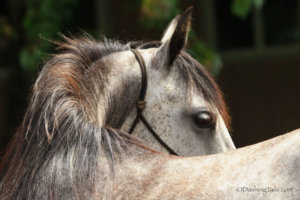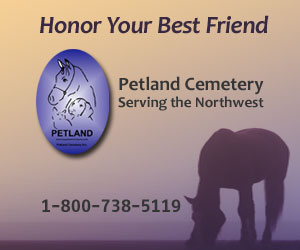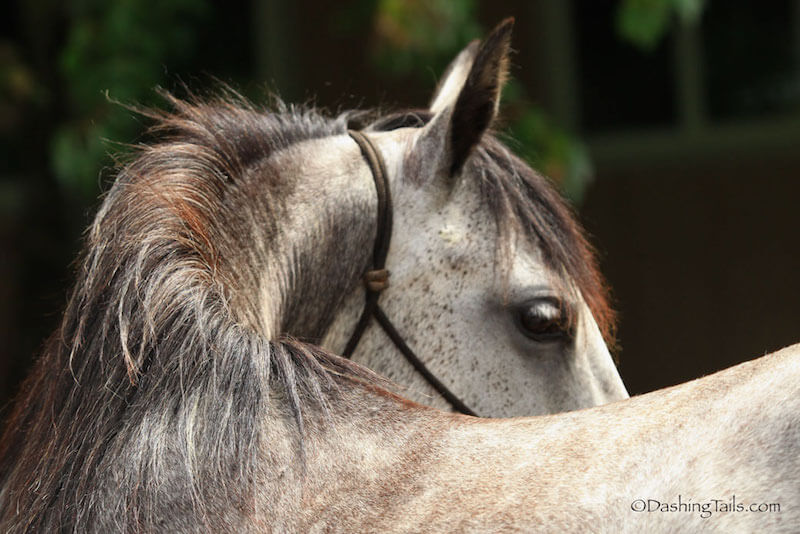Ten Questions to Ask About a Rescue Facility
by Alise Lamoreaux

“You can’t judge a book by its cover” and you can’t judge a horse rescue by its web site. In today’s world of global interactions, social media, and convenient web design templates, it is easy to create a persona online. Trying to determine the legitimacy of a person or business is not as easy as it was in the days before the Internet, days when face-to-face interactions were the norm and not something to schedule.
Until recently, I never thought about the “inner workings” of horse rescue organizations. Even though two of my horses came to me through our local rescue, I tried not to think about their situation too much. I also stayed away from reading the stories that would appear in news releases or on the Internet about law enforcement seizures. Every now and then I would send money to horse rescue groups, but I kept an emotional distance. I had done my part.
And then the Horses In Need Documentary Project came along through the Equine Photography Network. I thought a long time about whether I thought I could handle photographing horses that were suffering. I was afraid: of what I might see, of what I might hear and learn, and afraid I would want to take all the horses I saw home with me.

Still, I felt compelled to investigate what it meant to be a horse in a rescue/sanctuary environment through the lens of my camera. Since 2009, I have participated annually in this project. The horses I have met along the way have taught me about different types of rescue operations.
Through participating in these documentary projects, I have met people inside a variety of organizations. For the past 5 years, while researching and photographing horses for my projects, I have developed a commitment to “help the hands that help.” But I want to be sure of who and what I am supporting. I don’t want to wonder a few months down the road about the donation I made or the story I told.
As a result of my interactions with rescued horses and their situations, I’ve discovered 10 questions to ask about a rescue facility to determine if it is a reputable and reliable organization.
1. What type of rescue does it claim to be?
(Owner surrender, law enforcement/seizures, breed specific, feedlot saves, buys from auctions, OTT Thoroughbreds, etc.)
2. Where do the horses in the facility come from?
(Are they local or shipped in?)
3. What services are provided to the horses at the facility?
(Vet care, training, foster homes, etc)4
4. Who cares for the horses on a daily basis?
5. Can the facility tell you about their horses and can they account for what happens to the horses placed in their care?6
6. Have “accidental” breedings occurred at the facility?
7. Does the rescue provide contracts with the adopter of the horses and provide a plan for taking the horse back if the adoption doesn’t work out?
8. How does the organization meet its expenses? Can the rescue document how money is spent and show evidence that donations go towards the horses’ expenses?
9. Have any complaints been filed with local authorities regarding the facility?
10. Has the facility met the standards of the Global Federation of Animal Sanctuaries (GFAS)? If not, who oversees quality control for the facility?
Recently I read the book The Elephant Whisper, by Lawrence Anthony, the acclaimed conservationist who saved a rogue herd of wild elephants at his sanctuary in South Africa. The struggles he went through to save the herd, and the uphill battle he faced against poachers, ill-informed people, and ingrained traditions inspired me to think more about rescue efforts and what it means to be a sanctuary. The elephants he described felt like the horses I know. In learning more about the efforts of sanctuaries worldwide, I stumbled upon the Global Federation of Animal Sanctuaries (GFAS) and its role in the welfare of animals. This organization does not create sanctuaries, but rather helps sanctuaries help animals and sets standards for humane care. GFAS is involved with all types of animals and has specific equine standards already in place. If the public asked the rescues they support to be GFSA verified more uniformity would be provided for the care horses in rescues/sanctuaries.
A rescued horse named Shelby that I met in 2009 demonstrates how virtual allure and a lack of verifiable standards can mean trouble for horses in need. Shelby, originally a Nevada mustang, ended up being placed at a horse rescue facility in Oregon. Shelby was a hard-to-adopt case, as many Mustangs are, and the Oregon rescue found what was thought to be the perfect placement for her. The place was a 1900-acre ranch where horses could roam freely with an abundance of grazing land available. The web site looked beautiful. The sanctuary was located in Nebraska. It was a non-profit (501K) organization with a goal and a mission. Everything checked out on paper. Arrangements were made to transport Shelby there. It was supposed to be a place of comfort for horses. Apparently, for a while it was the dream it claimed to be, but the facility was mismanaged. Horses ended up in unhealthy and starving conditions. Ultimately, it ended in a multiple state effort to rescue the horses from the sanctuary. Shelby was identified through her brand and transported back to the rescue in Oregon. If uniform standards and peer monitoring were in place the problems could have been identified before the situation got out of control.
The tale of a rescue operation going astray happens all too often. Especially in hard times when the strain of the economy reaches deep into everyone’s pockets and more horses need help. Having clear questions in mind and an awareness of acceptable standards can help you determine if a particular rescue organization is one you want to get involved with.
Alise Lamoreaux is a photographer, writer, and horse enthusiast based out of Creswell, Oregon. Her photography and writing are featured in the Horse I Ching App available for the iPhone/iPad. To find out more about her visit www.dashingtails.com or visit Dashing Tails Photography on Facebook.
Published August 2013 Issue

The Northwest Horse Source is an independently owned and operated print and online magazine for horse owners and enthusiasts of all breeds and disciplines in the Pacific Northwest. Our contemporary editorial columns are predominantly written by experts in the region, covering the care, training, keeping and enjoyment of horses, with an eye to the specific concerns in our region.






